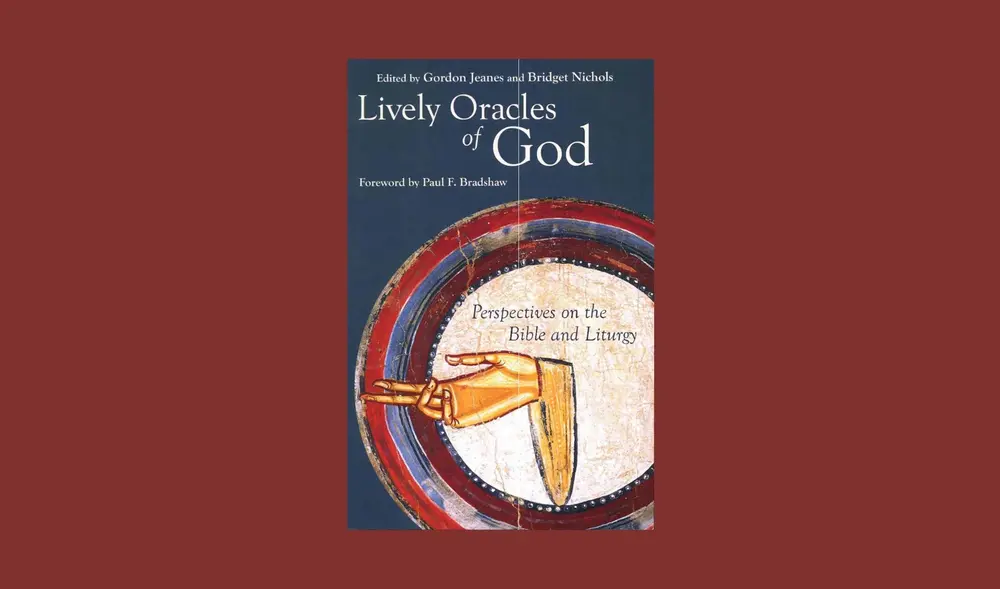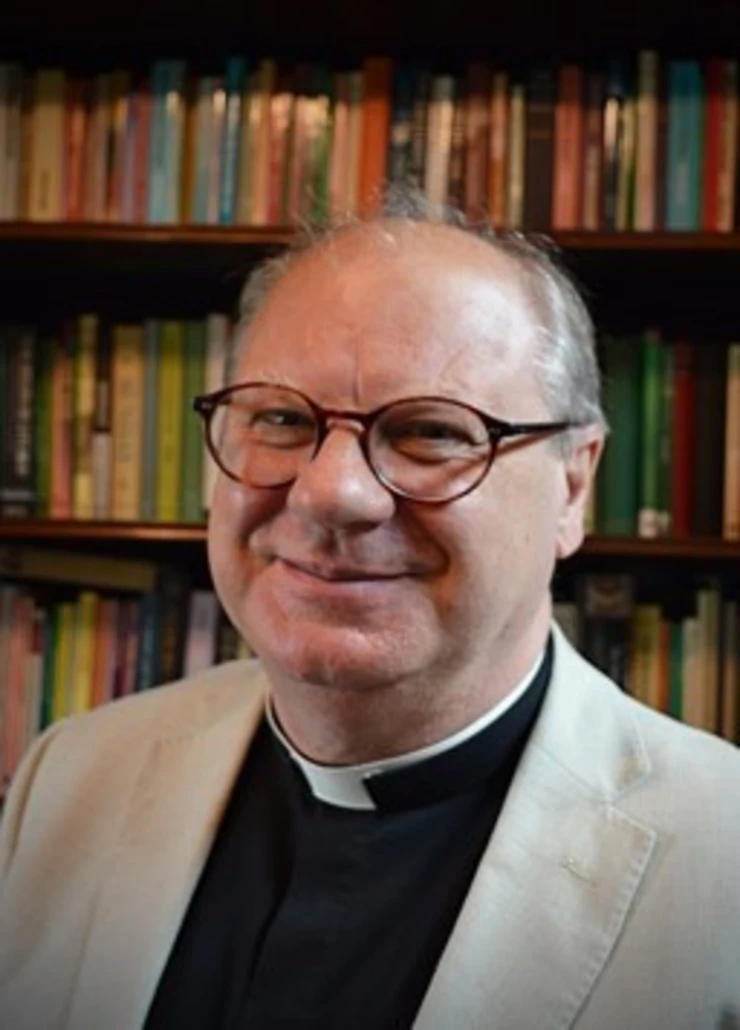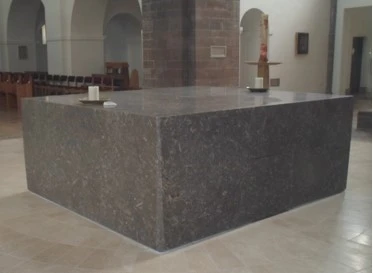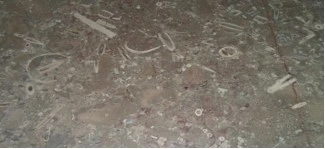What earth has given

Last year theologians of different Christian confessions came together to publish the book “Lively Oracles of God”. The contributions are influenced by the traditions of different countries, churches and theologies. On our blog, we will dedicate the upcoming weeks to some of the ideas presented in the book, which we will make available both in English and in a German translation. Essays by Anglican theologian Bridget Nichols and Jesuit John Baldovin are followed by a contribution by Christopher Irvine, Church of England, entitled "What earth has given."

The UK is heading for a crisis in food security. This is not simply a tabloid paper headline, but a considered opinion that emerges from a consideration of the changing climate conditions, transport and labour issues following on from the disastrous Brexit, war in Europe, and economic market forces. This confluence of factors is compounded further by the need to provide more housing for an increasing population, and all this has led farmers and growers to sell their land for development. This is especially visible in Kent and the south-east of England, once fondly known as the garden of England. On a roundabout on a ring- road of one of its ever-expanding towns is a protest sign that reads ‘no farms, no food.’ Providing food is a necessary and public good, and the most nuanced understanding of leitourgia is a work that accrues to the public good, and so these two premisses are not quite as disparate as we might at first suppose. My contention is that the two overlap and are deeply rooted in scripture. There are the rituals of the offerings of the first-fruits in the Hebrew scriptures (Deuteronomy), and then there are the blessings of foods, such as oil and cheese, that were integrated into the early Christian Eucharists. Although these liturgical units have received scholarly attention in recent years, they have often been regarded as being the antecedents of modern agricultural festivals such as the harvest festival popularised in England in the 19th century. In an essay in the Lively Oracles of God: Perspectives on the Bible and Liturgy (2022) I wrote about an outdoor liturgical performance, the Rogationtide procession. The origins of the Rogation procession are varied, and these have been clearly charted by John Baldovin[1]. What interested me is the way in which this outdoor procession has been repurposed in some contemporary liturgical resources as a means of engaging with the natural environment through the blessing of crops and gardens, thereby reconnecting worshippers to the source of food.
Giving thanks for what is produced is one thing, but having a liturgical interest in where and how it is grown is quite another. Here we may be surprised to see a rich treasury of liturgical texts and practices that relate directly to the growing of food and the provision of clean water in the form of blessings.
These blessings, found in medieval books from late Anglo-Saxon to mid-12th century texts, have been the subject of Tamsin Rowe’s research over recent years[2]. In this corpus, prayers are found for the blessings of herbs, the produce of orchards, apples, pears, and nuts, as well as the blessings of wells and sources of water. As a medieval historian, Dr Rowe’s primary concern is with the typology of these frequently copied texts, most of which, incidentally, originated in Benedictine monastic communities, but what intrigues me in this genre of prayer is the underlying theological conviction that God is in some way involved in the natural organic processes, especially as divine power is invoked to release the full fructifying goodness of what the earth can give and produce. In practice, these liturgical blessings involved stepping out into the field, the orchard, and the woods, literally to be with nature, and thereby earthing the liturgy.
A contemporary concern for the earth, ‘our common home’, was articulated by Pope Francis in his encyclical Laudato Si’. The Pope writes with prophetic insistence of how our care of the natural world is bound up with social justice, and the document is punctuated with occasional references to the Eucharist. Here we find some particularly lyrical phrases that express a sacramental mysticism: ‘It is in the Eucharist that all that has been created finds its greatest exaltation…/…the Eucharist is itself an act of cosmic love.’[3] In these phrases Pope Francis focuses on the teleology of the Eucharistic bread and cup over which thanksgiving is made, of what it becomes as the res et sacramentum. But at a time of a greater awareness of the impact of the climate crisis on what and where we may grow our food and secure our water, our attention may well be drawn back to consider the origins of the elements of Communion, the bread and the fruit of the vine and their organic origins in the wheat of the field and the grapes of the vineyard.
So, to the earth we turn, and here I have two reflections to offer. The first relates to the biosphere, to the ecology of living things and matter on the surface of the earth, and then the geo-sphere, the deep time of creation in the formation of the earth. First, the biosphere and in this we take a further step in the recent attention being given to the material dimensions of the liturgy, to the organic origins of the elements of the Eucharist, bread and wine that ‘earth has given.’
In the celebration of the Eucharist, the Christian community presents and takes ‘what earth has given’, and in this ritual complex it is reminded of its dependence on what is planted, cultivated, and grown in the grain of wheat and on the vine.
As David Power wrote: [it] makes us mindful of the material world and the cosmos as God’s creation and as humankind’s dwelling place.’[4] The food and drink of the Eucharist has received considerable scholarly attention in recent years, especially in the work of Andrew McGowan and Thomas O’Loughlin,[5] but as suggested, the deepening climate and environmental crisis compel us to look behind the production of food and drink to their organic origins, to the very biological matter from which our food and drink are sourced and produced. And ultimately, this leads us back to the soil, not only in considering the origin of our food and drink, but also in our reflections on the material of the Eucharist. We must return in our reflections of the Eucharistic to the stuff of the earth, for as Irenaeus insisted, the bread of the Eucharist is ‘from the earth’ and the wine ‘part of creation’ (Adv. Haer.4.17.5). Everything that grows depends not only on water but also on the health and quality of the soil itself. It is this surface, and fragile level of the earth that is so crucial here. A thanksgiving prayer in the ancient Didache reminds us that the bread for sharing was made from the grain that had been scattered and grown on the hillside, and that what is sown, germinates and grows in the soil. This may well evoke images from the parable of the Sower, but what is significant about the soil is that it is not just inanimate stuff but is itself alive. As a contemporary nature writer has written in a rather startling sentence: ‘Beneath every square metre of ground are ten million, million bacteria…, ten thousand protozoa and five million nematodes’[6] and to this we should add all the different worms and invertebrates that enrich the soil and provide the necessary nutrients for the plants to grow. Such a view of the biosphere certainly expands the sense and symbolic freight of what is taken, blessed, broken, poured out, given, and received as graced gift in the Eucharist.
In the celebration of the Eucharist, time and space are correlated. For the elements that are taken and placed on the altar not only symbolise the biosphere, but by what is recited in the Eucharistic Prayer they also come to signify the deep time of creation, the origin of all that is. References to creation in this sense are integral to the narrative of thanksgiving, and this is illustrated in the narrative structure of the thanksgiving psalm, Psalm 136, (with verses 4-5 celebrating the creation of the world, and verses 10-24 rehearsing God’s redeeming work) as well as in several both ancient and contemporary Eucharistic Prayers. But this sense of the deep or geological time associated with the Eucharist, is stunningly shown in the prominent altar in the church of the Community of the Resurrection, Mirfield.


This relatively new stone altar, consecrated in 2018, is massively substantial, measuring some 8 feet across (2.438 cm) and 7 feet (2.133cm) deep, and its very permanence in the space evokes the image of Christ the rock, a constant and utterly reliable presence. The altar was fashioned by James Elliott and is constructed from Mandale fossil limestone from a quarry on the Chatsworth estate high in the Peak District of Derbyshire, in the UK. Impacted in the stone, reckoned to be approximately 350 million years old, are visible fossils of some of the earliest forms of life on planet earth. There are crinoids, brachiopods, corals, and sharks’ teeth. The deep time represented by this altar makes every Eucharist celebrated there a ‘mass on the universe’ (pace Teilhard de Chardin), recalling the vision of the cosmic Christ in Colossians 1.15-20, the Christ who is ‘before all things and through whom all things hold together’. And as thanksgiving is made at this altar over what ‘earth has given’ the life of planet earth is symbolically caught up in the ritual action by the crucified and living Lord ‘through whom and for whom all things were made’. And so, it seems that whether gathered at the altar, or working or resting in the garden, we can, again and again, proclaim that the earth belongs to the God of heaven, who wills to ‘give food to all flesh’ because the Lord’s ‘steadfast love endures for ever.’ (Psalm 136.25&26).
[1] John Baldovin SJ ‘Processions’ in the Reallexicon fur Antike und Christentum, vol.28 (Stuttgart: Anton Hiersemann Verlag, 2018) 393-434.
[2] See, for example, Tamsin Rowe ‘Bless. O Lord, this fruit of new trees’: liturgy and nature in England in the central Middle Ages’ in God’s Bounty? The Church and the Natural World, ed. Peter Clark (Woodbridge: Boydell and Brewer, 2010) 53-65.
[3] Encyclical letter Laudato si’ of the Holy Father Francis on Care for Our Common Home (Vatican Press, 2015) 236.
[4] David N. Power The Eucharistic Mystery: Revitalizing the Tradition (Dublin: Gill and Macmillan, 1992) 315.
[5] See Andrew McGowan ‘Food, Ritual, and Power’ in Late Ancient Christianity, edited by Virginia Burrus, (Minneapolis: Augsburg Fortress, 2005) 145-164, and Thomas O’Loughlin The Eucharist: Origins and Contemporary Understandings, (London and New York: Bloomsbury T&T Clark, 2015) chapters 3 and 4.
[6] Mark Cocker Claxton: Field Notes from a Small Planet (London: Jonathan Cape, 2014) 28.
Christopher Irvine is an Honorary Teaching Fellow of St Augustine’s College of Theology and teaches for the Mirfield Liturgical Institute, the College of the Resurrection, (UK). He was rector of the College of the Resurrection in Mirfield. He is a member of the Church of England Liturgical Commission and Chairman of the Alcuin Club.
Scholarly interests: the relationship between liturgy and art, and sacred space.
Selected publications:
- The Art of God. The Making of Christians and the Meaning of Worship. London 2005.
- The Use of Symbols in Worship. London 2007 (Alcuin liturgy guides 4).
- The Cross and Creation in Christian art and liturgy. London 2013 (Alcuin Club collections 88).
